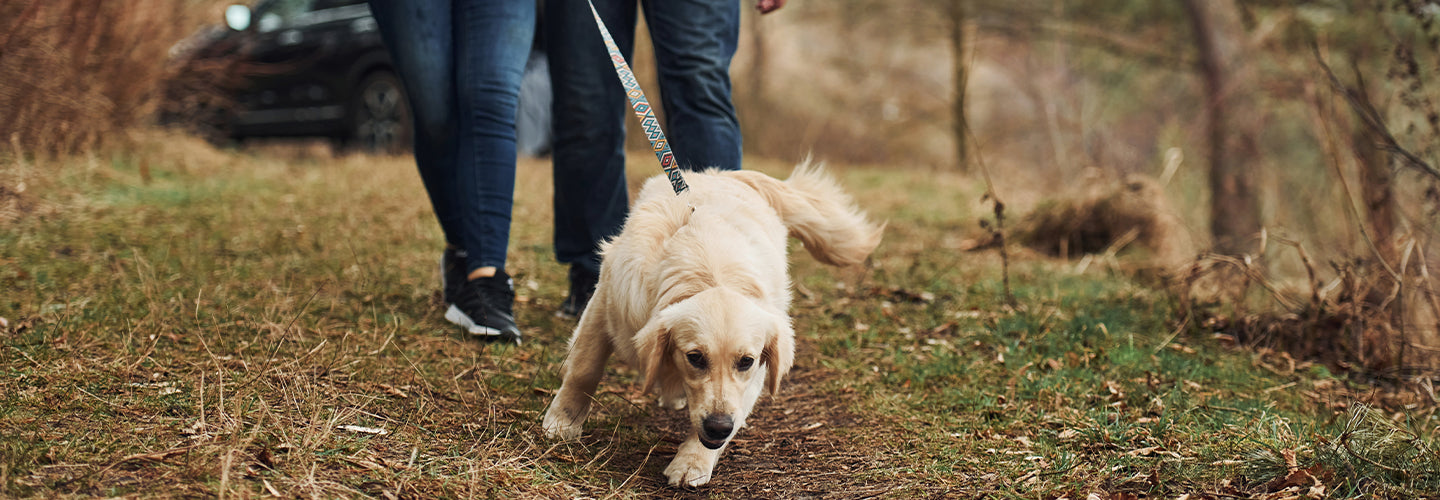

Posted by Emma Oldroyd, on
Top Tips to help Prevent Dogs from Lead Pulling
From dashing Dobermans to lolloping Labradors, having a dog that pulls can ruin a nice dog walk and even put an owner or their dog in a dangerous situation. Dr Roger Mugford, world renowned dog behaviour consultant, gives some advice on how to solve the problem.
Why do dogs pull on the lead?
Dogs pull because it is a successful behaviour. If every time your dog pulls forward it is rewarded by sniffing an interesting smell, greeting another dog or being allowed to run free, your dog will learn that by pulling they get to do lots of fun stuff!

How to train your dog not to pull on the lead
Any non-pull training must start at home. Your dog can only learn effectively when it is calm. If your dog gets excitable just at the sight of the lead, simply drop the lead and walk away. Once your dog is calm again, approach and put on the lead. When at the door, teach your dog to sit and wait until the door is open and you are outside before asking your dog to follow. If you drive to a dog walking area, then this same approach needs to be taken when getting your dog out the car.
Once lead walking, follow these top tips to encourage your dog to walk by your side:
- Walk at a comfortable but brisk pace, calling your dog to come with you.
- As soon as your dog begins to create any tension in the lead, immediately move backwards or stop, and encourage your dog to return to your side. Continue to move backwards until the lead is once again slack, at which point you should immediately walk forward again.
- As soon as your dog walks on a slack lead, praise immediately. Aim for just a few steps at first, before you break off for a reward treat. As walking improves, continue the verbal praise but increase the time between reward treats.
- Reward your dog for walking well, rather than using treats as a lure to keep it beside you.
- If you’re going to use a word such as ‘heel’, first say it when your dog is walking beside you. That way your dog associates the ‘heel’ command with walking nicely, not pulling.
- Consistency is key. The same approach needs to be taken by all people who walk your dog. A little extra time and patience for a couple of weeks will bring long term benefits.
Items that prevent your dog from pulling on the lead
Using the right dog training products can also really help. For example, the wrong dog harness can aggravate pulling issues. Any design that only connects the lead from the back will enable your dog to lean into the front of the harness and pull you along.
Non-pull headcollars like are the most effective training aid for really strong pulling dogs. For flatter nosed dogs or simpler initial training, harnesses are the ideal option. Using a headcollar or harness with a double clip lead provides the optimum no pull combination.
You can shop our range of collars, leads and harnesses online today including the Halti optifit head collar.